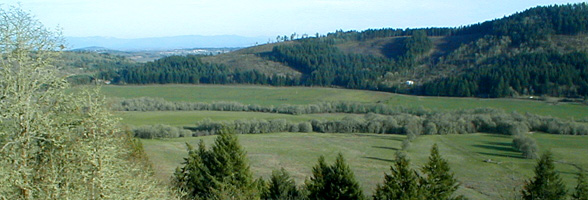|
Area |
Last Best Places |
Threats |
Protection |
Example epiphytic lichen species at risk |
|
Willamette & Puget Valleys |
Ash swamps
(see also Hotspots) |
- urbanization
- agriculture
- air pollution
|
- wetland laws (Clean Water Act)
- riparian protection in forest practices law
- Clean Air Act (weak protection)
- land use laws (e.g. urban growth boundaries)
|
- Hypotrachyna riparia
- many cyanolichens
|
|
Foothills |
Oak savannas |
- urbanization
- air pollution
Oak savannas are probably the most threatened
of the habitats listed here. |
- Clean Air Act (weak protection)
- land use laws (e.g. urban growth boundaries;
weak)
|
- Bryoria tortuosa
- Lecidea dolodes
- Sulcaria badia
- certain pin lichens: (Calicium quercinum,
Chaenotheca brachypoda, Sclerophora peronella, Sphintrina leucopoda)
|
|
Low- to mid-elevation mountains |
Old conifer forests
Rock outcrop areas |
|
- NW Forest Plan (federal lands only)
- riparian protection in forest practices law
- Clean Air Act (weak)
|
- Nephroma occultum
- Pseudocyphellaria rainierensis
- Ramalina thrausta
- Usnea longissima
- No rare epiphytes specific to fringes of
rock outcrop areas are known, but may include species of savannas
and old forests.
|
|
Mid- to high-elevation mountains |
Mountain summits and ridges |
|
- Designated wilderness and other reserves
|
Chaeonotheca cinerea
Tholurna dissimilis |
|
Immediate coast |
Old shore pine - shrub -dune
systems
Headlands |
|
- State land use laws
- wetland laws
|
- Bryoria spiralifera
- Bryoria pseudocapillaris
- Erioderma sorediatum
- Heterodermia japonica
- Heterodermia sitchensis
- Leioderma sorediatum
- Pannaria malmei
- Teloschistes flavicans
|

